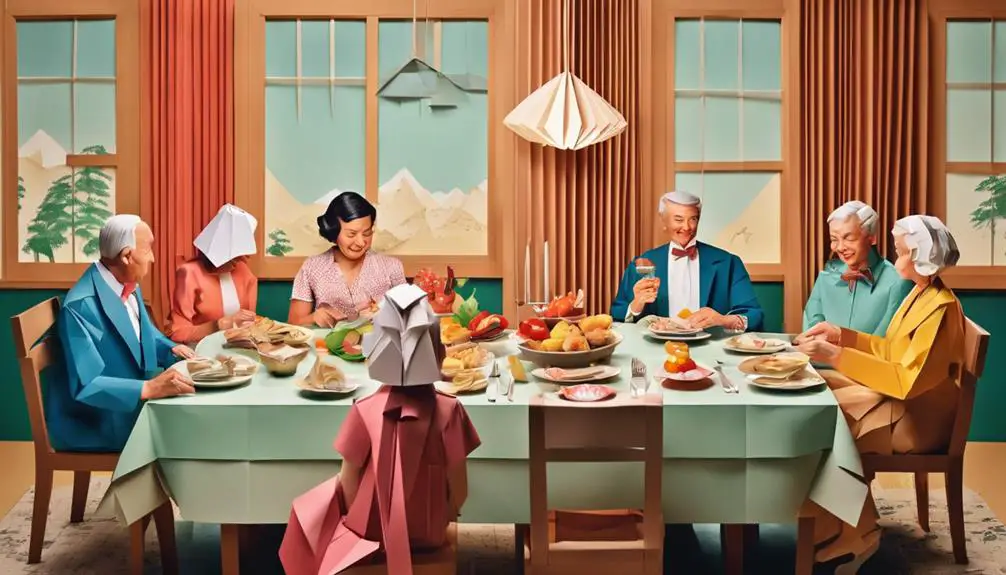In the 1950s, you could bask in the glow of an economic boom with soaring family incomes, robust homeownership rates, and financial stability. The era offered a higher standard of living, expanded job opportunities, and technological progress. However, societal constraints were a dark cloud, with women confined to traditional roles, facing gender inequalities and limitations in career advancement. Family values were paramount, fostering harmony, while racial inequalities persisted despite economic growth. Embrace the complexities of this era where economic prosperity intertwined with societal challenges, offering both stability and disillusionment.
Takeaways
- Pros: Economic boom led to higher family incomes and stability.
- Cons: Gender inequalities restricted women's opportunities and freedoms.
- Pros: Strong emphasis on family values and community cohesion.
- Cons: Racial inequalities persisted, limiting opportunities for minorities.
- Pros: Technological advancements created new opportunities and transformed society.
Economic Prosperity
Experience the economic boom of the 1950s as average family income soared and homeownership rates surged, symbolizing a period of unparalleled prosperity. This era was characterized by robust economic growth, fueled by increased production and availability of consumer goods. Families across the nation found themselves in a position of financial stability, with rising incomes allowing for a higher standard of living. Government spending, particularly through initiatives like GI benefits, played a significant role in boosting family incomes and reducing poverty levels.
The dream of owning a home became a reality for many Americans, with homeownership rates reaching new heights, especially in the suburbs. Suburban living, once a distant aspiration for most, now symbolized economic success and stability. The ability to own a piece of the American dream was within reach for a larger portion of the population than ever before. This economic prosperity of the 1950s laid the foundation for a thriving middle class and reshaped the American landscape.
Societal Limitations

In the 1950s, societal limitations constrained women to traditional roles as wives and mothers, restricting their opportunities for professional and personal growth. Women faced gender inequalities, with societal expectations enforcing strict norms that limited their aspirations beyond the domestic sphere. These constraints left many women feeling disillusioned, as they yearned for more fulfilling and diverse roles in society.
The rigid societal constraints of the time stifled women's freedom and hindered their chances for advancement in various fields. Despite their potential and capabilities, women were boxed into predefined roles, leading to a sense of dissatisfaction and unfulfillment among many. The 1950s painted a picture of a society where women struggled against the boundaries set by traditional gender roles, highlighting the challenges they encountered in breaking free from societal expectations. These limitations not only affected women individually but also had broader implications for gender equality and societal progress.
Gender Roles

Reinforcing traditional societal expectations, women in the 1950s were confined to predefined gender roles that centered around domestic responsibilities. Back then, women faced immense societal pressure to conform to these roles, focusing primarily on being good wives and mothers. The era lacked gender equality, with women finding themselves limited in career advancement opportunities. Traditional gender norms dictated that women should prioritize home life over pursuing personal or professional growth. This meant that women were often discouraged from seeking higher education or entering male-dominated fields.
The 1950s encapsulated a time when women experienced significant limitations in various aspects of their lives due to these rigid gender roles. Breaking free from these constraints was challenging, as society expected women to adhere strictly to these traditional expectations. As a result, many women found themselves boxed into roles that didn't necessarily align with their aspirations and capabilities. The struggle for gender equality and the dismantling of these restrictive gender norms would later become vital aspects of the feminist movement.
Family Values

Family values in the 1950s centered around the promotion of traditional gender roles, emphasizing the roles of the breadwinning father, the homemaker mother, and the well-behaved children. This era placed great importance on maintaining harmony within the family unit.
Here are some key aspects that defined family values in the 1950s:
- Gender Expectations: Women were expected to prioritize their roles as homemaker mothers, focusing on nurturing the family and managing household duties.
- Breadwinning Father: Fathers were expected to be the primary providers for the family, taking on the responsibility of financial stability.
- Societal Norms: The 1950s reinforced traditional societal norms that dictated the roles and behaviors expected within the family structure.
- Harmony and Respect: Family values during this time emphasized the significance of maintaining harmony and showing respect for authority figures within the household.
These values painted a picture of a structured and orderly family life, where adherence to these roles was seen as essential for a well-functioning and respectable family unit.
Community Ties

Strengthening the fabric of society, community ties in the 1950s were characterized by strong bonds and active participation in local events. Neighbors weren't just faces you passed by; they were friends who knew each other by name and shared in each other's joys and sorrows. The sense of belonging and camaraderie in neighborhoods was palpable, fostering a community where everyone looked out for one another. Community centers and local churches served as hubs for social connections, where residents gathered for events, meetings, and shared activities that brought them closer together.
Block parties and potlucks were common occurrences, where laughter and chatter filled the streets, strengthening the bonds between neighbors. These gatherings weren't just about food and fun; they formed the backbone of support networks, creating a safety net for residents in times of need.
The unity within communities during the 1950s was undeniable, creating a sense of belonging and shared purpose that enriched the lives of all who were a part of it.
Stability and Nostalgia

Building on the foundation of strong community ties in the 1950s, the era also exuded a sense of stability and nostalgia that continues to resonate with many individuals today.
- Structured Roles: Picture a scene where fathers went to work, mothers managed the household, and children played in the yard. Each family member knew their role, creating a sense of order and predictability.
- Traditional Beliefs: Imagine a time when traditional values like respect for authority, hard work, and family unity were deeply ingrained in society. These beliefs provided a moral compass and a shared sense of purpose.
- Stability: Envision a period characterized by economic prosperity, post-war recovery, and a general sense of security. People felt confident about the future and embraced the predictability of daily life.
- Nostalgia: Think of how memories of the 1950s often evoke sentimental feelings for a simpler time when societal norms seemed clearer, and family bonds felt stronger. This nostalgia reflects a longing for the stability and familiarity of the past amidst societal changes.
Disillusionment Among Women

Feeling confined to domestic roles and facing limited opportunities, many women in the 1950s experienced a sense of disillusionment amidst societal expectations and gender inequalities. The restrictions imposed by traditional roles and gender norms left women yearning for more autonomy and fulfillment beyond the confines of homemaking and child-rearing. The prevalent societal expectations during the post-World War II era reinforced the idea that a woman's primary role was within the home, limiting their career prospects and decision-making power.
The lack of opportunities for women to pursue their ambitions and aspirations outside of traditional gender roles led to widespread disillusionment. Many women felt trapped by the rigid societal expectations that dictated their every move and stifled their potential for growth and independence. The gender inequalities that permeated the 1950s created a breeding ground for frustration and discontent among women who sought more agency and opportunities to shape their own destinies. The yearning for autonomy and the desire to break free from the shackles of societal norms fueled a sense of disillusionment that echoed throughout the decade.
Opportunities and Constraints

What opportunities did individuals in the 1950s have to advance economically and socially, and what constraints limited their potential for growth and autonomy? The 1950s presented a mix of prospects and challenges that shaped the lives of people during that era.
- Economic Prosperity: The 1950s brought about economic growth, job opportunities, and the expansion of the middle class, offering individuals a chance to improve their financial standing.
- Gender Roles and Women in the Workforce: Despite economic growth, limited opportunities existed for women in the workforce due to societal expectations and rigid gender roles, constraining their ability to pursue careers and economic independence.
- Racial Inequalities: Racial inequalities persisted, particularly affecting African Americans, who faced significant barriers to advancement despite the overall economic prosperity of the decade.
- Technological Advancements: The 1950s saw progress in technology and infrastructure, creating opportunities for some segments of the population to engage with new innovations and industries.
Conclusion
Living in the 1950s had its perks, like economic prosperity and strong family values. However, societal limitations and rigid gender roles could be a downside.
Community ties were strong, but some women felt disillusioned by their limited opportunities. Overall, the 1950s offered stability and nostalgia, but also constraints that could be challenging to navigate.
It was a time of both opportunity and restriction, shaping the lives of those who lived through it.
